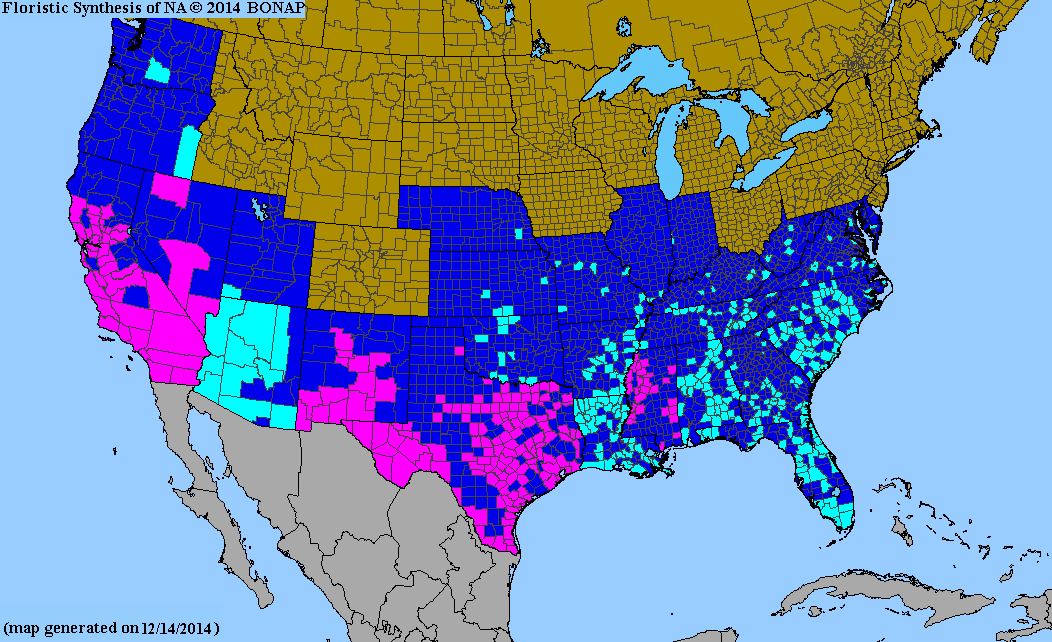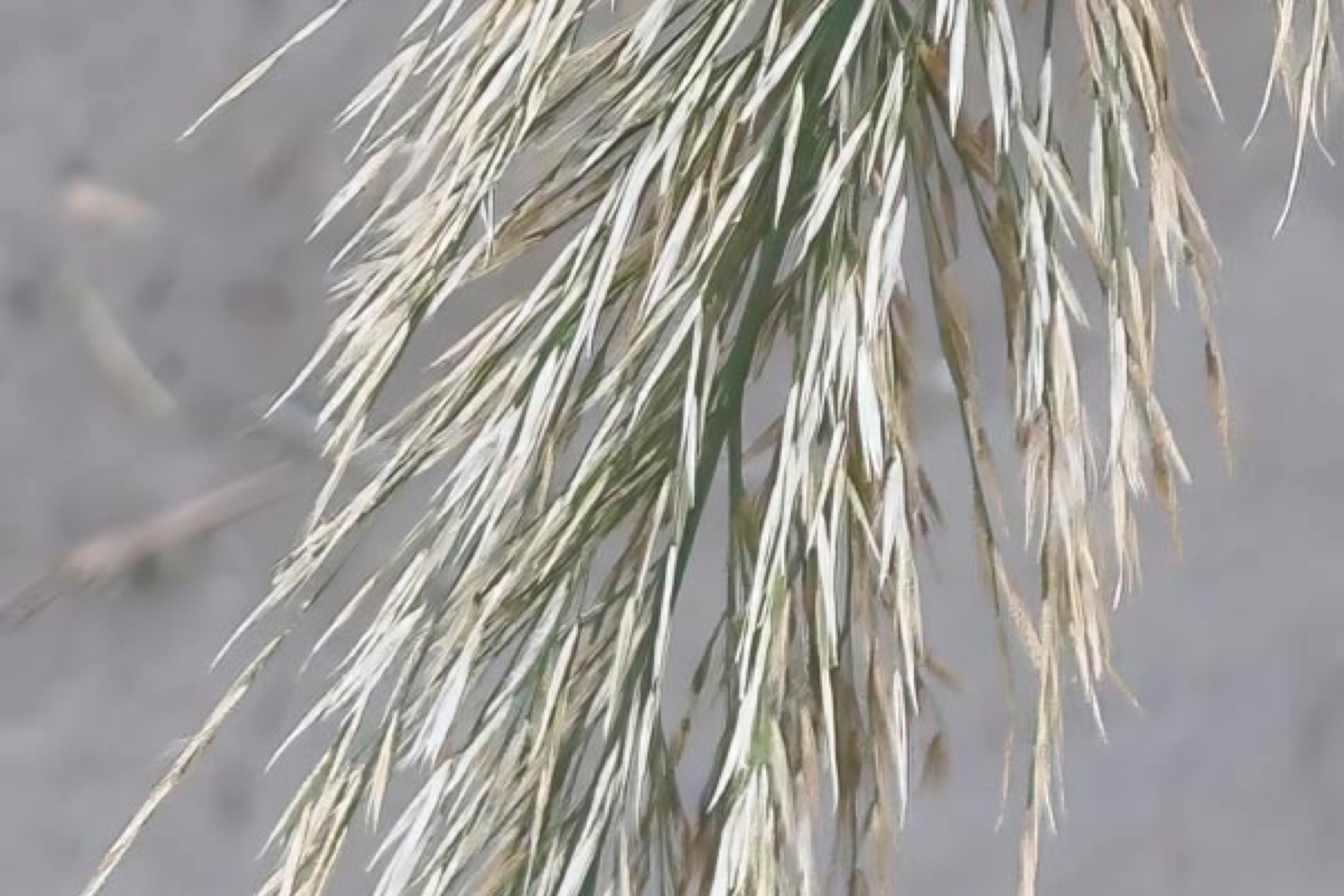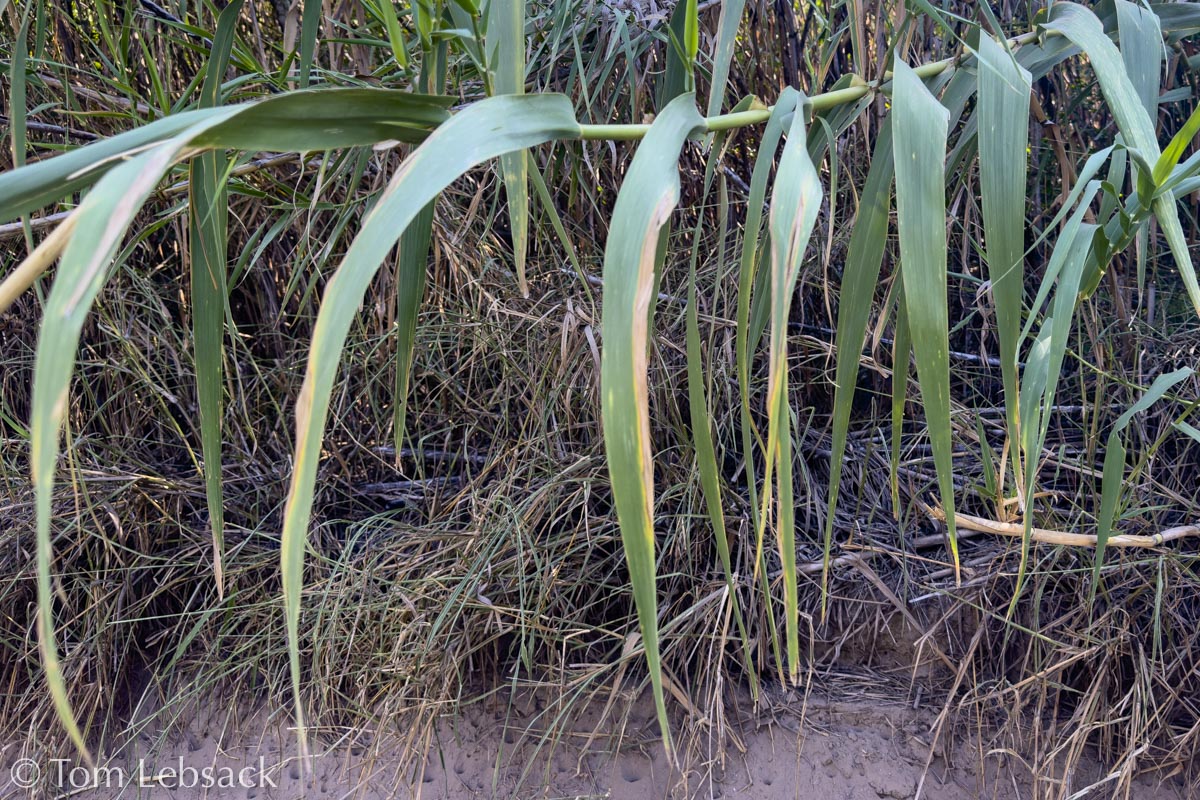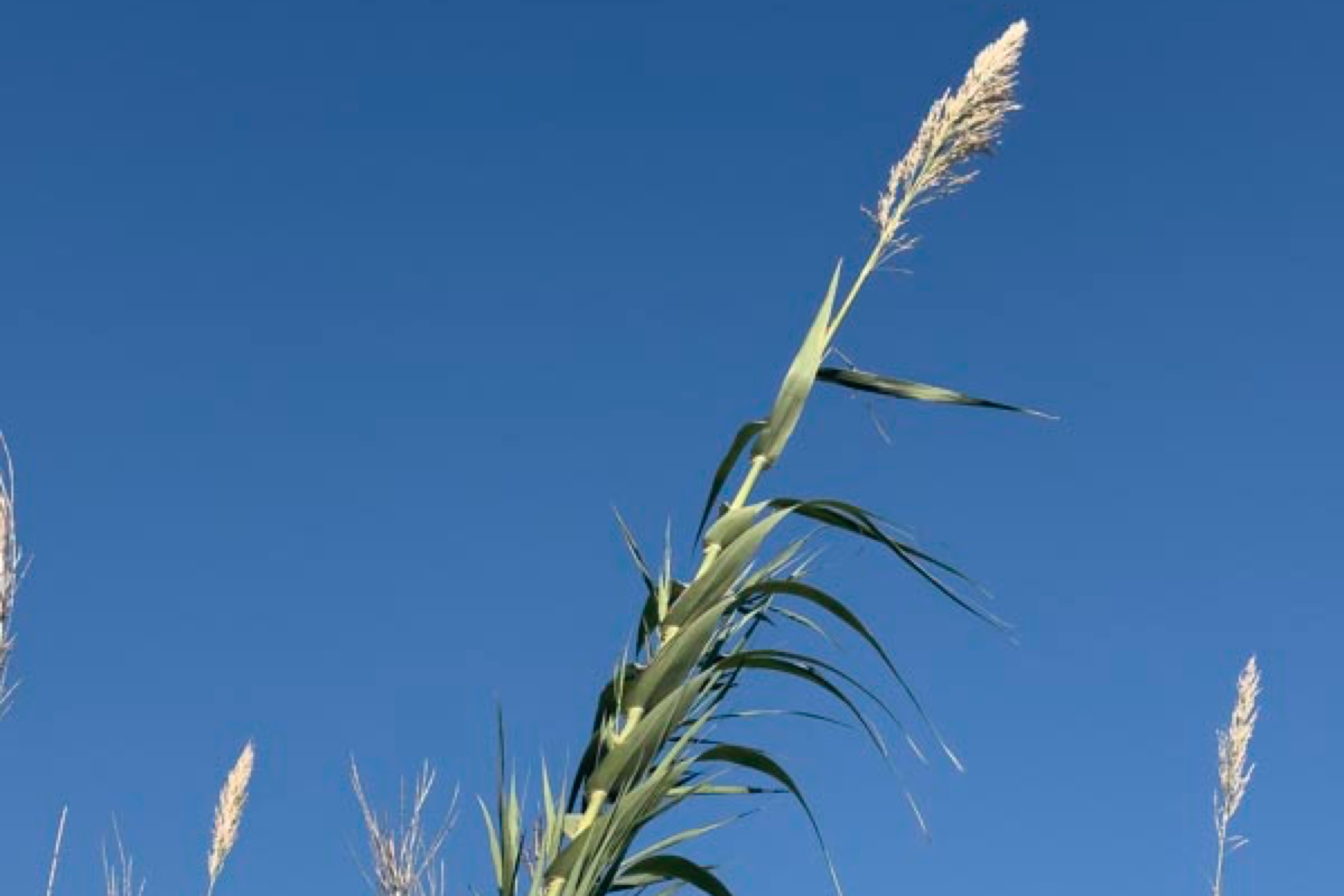Texas Wildbuds
Arundo donax
(Giant Reed)
| Scientific Name | Arundo donax | USDA PLANTS Symbol | ARDO4 |
| Common Name | Giant Reed | ITIS Taxonomic Serial No. | 41450 |
| Family | Poaceae (Grass) | SEINet Reference |
Click Here |
| Description | Habitat: Sand bars, levees, along ditches, culverts, and roadsides where water accumulates. Plant: Tall, cane-like perennial grass forming large clumps from rhizomes; culms (stems) 6 to 20 ft. tall and up to 2 inches thick; mostly unbranched. Foliage: Narrow, flat alternate leaves, 1 to 2 ft. long and 1 to 2 inches wide, evenly spaced along the stem. Inflorescence: Erect, dense, much-branched panicle, 12 to 24 inches long; spikelets 3/8 to 5/8-inch long, 3 to 6-flowered; glumes are lanceolate, thin, about as long the spikelet; lemmas are lanceolate. Bloom Period: Late sumer. References: "Manual of the Vascular Plants of Texas" by Correll and Johnston, SEINet and Texas Invasives. Note: Used extensively as a windbreak, for erosion control on wet dunes and as an ornamental but its tendency to spread is often a disadvantage and it is considered an invasive species in many southern US states, including Texas. |
BONAP Distribution Map Map Color Key Map Color Key |
Texas Status: Introduced Invasive |
Banner photo of Castilleja indivisa and Lupinus ssp. taken along FM 1323 north of Johnson City, Blanco County
© Tom Lebsack 2025
Every attempt is made to provide accurate, up-to-date, and relevant information, but the completeness or accuracy of any information presented on this website cannot be guaranteed. I use authoritative references to insure high standards of accuracy and review and update the information frequently.



